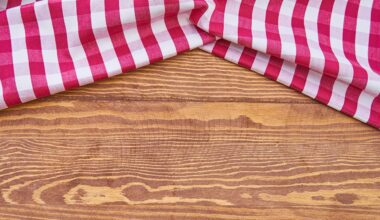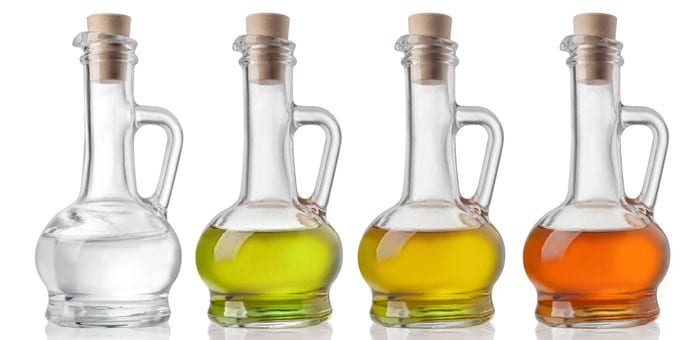When painting, it is common for the paint to end up in unintended locations. Acrylic paint differs from other paints, which can be easily removed by washing the surface. Because it dries relatively quickly, one must act swiftly to remove it while it is still wet if it gets on an unintended surface.
Ways To Remove Acrylic Paint from Wood
With the proper equipment, removing acrylic paint from wood is easy. However, depending on the project you are working on, the steps you take and the tools you employ will vary. Use the following tips to help you select the method that most effectively meets your needs.
1. Using Denatured Alcohol
Denatured alcohol removes acrylic paint from unfinished or unvarnished wood, similarly to rubbing alcohol. Compared to regular rubbing alcohol, denatured alcohol is more potent.
- Apply the alcohol using a paintbrush or a cloth, and let it sit for two to five minutes. This will cause the surface acrylic resin to degrade.
- Use a putty knife or a scraper to remove the softened paint. Since using too much force with a putty knife could damage the surface, don’t use too much force.
- Reapply alcohol to the surface and scrape it until all the paint is removed.
- To remove residue, dampen a towel with cold water and then wipe the surface.
2. Using Rubbing Alcohol
Acrylic paint can be easily removed from hardwood floors and unfinished wood using rubbing alcohol. As a substitute, isopropyl alcohol can be utilized. Nonetheless, the wood must be completely bare. Be careful when working with varnished surfaces, as rubbing alcohol can remove them, dulling the surface.
- Remove dry paint from the wood using a paint scraper or putty knife. Remove as much paint from the wood as possible without damaging it.
- Apply to rub alcohol on a towel and saturate it. Pour the sufficient liquid to cover the material.
- Alternately rub the paint spots with the towel while applying additional alcohol as needed.
- Instead of a cloth, use steel wool to rub alcohol into the paint to remove large paint stains.
- Use a soapy cloth to wipe the wood clean of dirt and residue.
- Utilize a towel for drying the wood.
Note: Alcohol should never be consumed near an open flame or ignition source, as doing so could result in a fire. Keep rubbing alcohol away from children and windows that could potentially expose bystanders.
3. Using Vegetable Oil or Olive Oil
Olive or vegetable oil can be used to eliminate dry acrylic paint. Here’s how:
- Apply the oil directly to the painted surface, and allow it to sit on the surface for 15 minutes. This should soften the paint and cause bubbles to form. During this step, avoid contact with the wood.
- Use a scraper to the wood to remove the acrylic. Use light pressure to eliminate the stain without damaging the varnish or causing scratches.
- Remove the remaining oil and paint from the surface with a damp towel.
- Repeat the steps as many times as required to completely remove the paint.
4. Using Solvents
It is possible to quickly remove thick layers of acrylic paint from wood using paint solvents. Several options include methylene chloride, lacquer thinner, and ammonia. Without harming the finish, these solvents can remove a thick layer of paint from wood that has not been painted or finished.
- Use a paint brush or roller to apply a thin solvent layer to the paint, and let it sit on the surface for 20 to 30 minutes or as the manufacturer directs.
- Scrape the surface in the same direction as the wood’s grain with a plastic or putty knife to eliminate paint bubbles.
- Use Mineral spirit for neutralizing wood and removing any residue or solvent residue.
- Wipe the surface with a clean, damp cloth after the application.
- Finally, permit it to dry thoroughly. After approximately one week, the surface can be refinished.
Note: All paint solvents pose significant health and environmental risks. This is one of the riskiest options available to you. If you need assistance, consider contacting a trained professional. When working with solvents, you must always wear protective equipment and adhere to all safety regulations.
5. Using Acetone
Since acetone is effective in removing paint, it stands to reason that it can be used to remove acrylic paint. Acetone can be purchased from any hardware or paint store. This technique works best on unfinished wood painted with acrylic paint. To remove acrylic paint using acetone, please follow these steps:
- Cover the painted surface with liquid acetone and paper towels within five minutes. The rapid evaporation of acetone slows the process and softens the paint.
- Use a scraper to remove the paint, then use a clean rag to add acetone to the remaining paint. In a back-and-forth motion, scrub the paint.
- Repeat the step if necessary.
- After removing the paint, a damp towel is recommended to wash the wood.
- Use another towel to dry the wood. Let any remaining moisture evaporate.
6. Using Paint Stripper
For larger exterior projects, use a chemical paint stripper. They effectively remove thick acrylic paint from vertical wooden surfaces, such as railings and decks. Here are some guidelines to assist you:
- Apply the product with a paintbrush to the acrylic surface.
- Get a paint scraper or putty knife to remove excess paint.
- Use a high-pressure hose or pressure washer two to five minutes later to remove the product.
- Utilize a damp cloth for surface cleaning.
- Dry the wood for a minimum of 48 hours.
- After the wood has dried, it can be refinished and sanded.
7. Through Sanding
Sanding a door of wood painted with thick acrylic paint restores its original finish. Even though it dissolves paint, the procedure is laborious. You can complete the task with a sanding block and some fine sandpaper if you cannot access a power sander, saving you time and effort. Find something with between 80 and 150 grit.
Also, sanding the wood is the best method for removing acrylic paint stains from wooden coffee tables and end tables. If you’re working on a similar project, read on:
- Prepare the safety gear and move to an area with good air circulation or outdoors.
- Now you can prepare for sanding by setting up your power sander or wrapping sandpaper around your sanding block.
- Sand the area in a back-and-forth motion. This step assists in removing paint and stains that have deeply penetrated the wood grain.
- Remove the dust.
- Switch to a finer grit and repeat sanding. Then, change the sandpaper with a grit of 150.
- Dust the surface of the wood and clean it with a damp towel. The wood is lighter and more refined in appearance and texture at this stage.
- The surface can then be varnished or painted as desired.
FAQs Section
Below are the most commonly raised questions concerning removing acrylic paint from wood.
What is Acrylic Paint?
Acrylic paint has only recently been widely used. Before the invention of acrylic paint, oil-based paint was the only option for any size painting project. Both small and large projects were identical. Painters have used oil-based paints as a default for centuries. As early as the seventh century, oil-based paint was used to paint murals and significant events on the ceilings of caves. These paintings were used to adorn caves.
What does acrylic paint do on wood?
On wood, acrylic paint can leave a stain, but the stain is typically temporary. Even dried acrylic paint can be removed from wood furniture with perseverance and effort. It is advised that wooden furniture and doors be painted with durable acrylics. However, the paint may peel or chip over time.
Is Acrylic Paint Easy to Remove from the Wood?
It is possible to remove acrylic paint using rubbing alcohol, a heat gun, solvents, or sandpaper, although it is best to clean up a paint spill immediately. The most effective response to a paint spill is immediate cleanup. If multiple layers of acrylic paint have been applied, it may be necessary to repeat the process and sand the surface.
Conclusion
Acrylic paint can be easily removed from wooden surfaces using the options above. Try what fits in your resources and the availability of the tools. Above all, the most important wood maintenance procedure is to take immediate action on acrylic paint before it gets dried.
Browse for More Information
Wood Types 101: Three Main Types & How To Identify
Help is Here: Inspecting Wood Infestation and Applying Best Solutions




